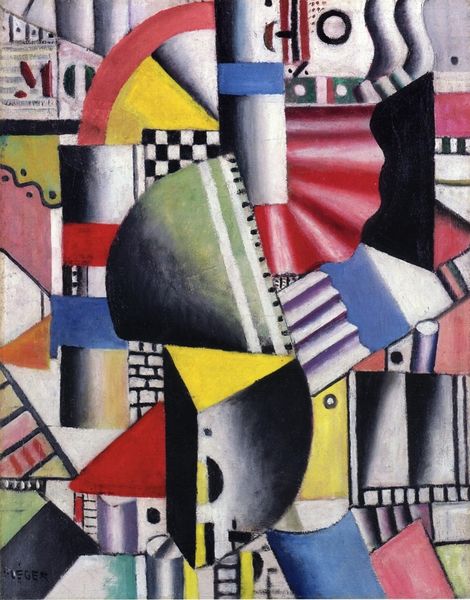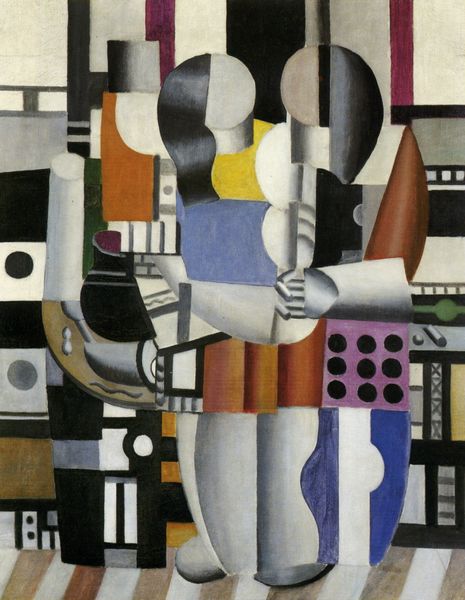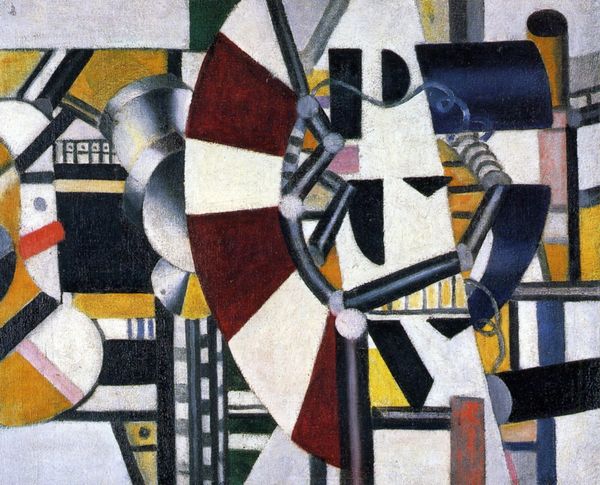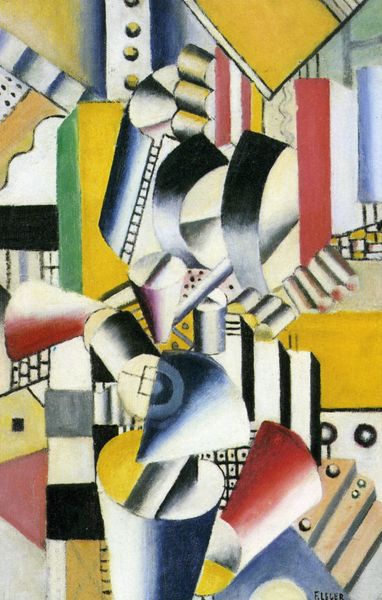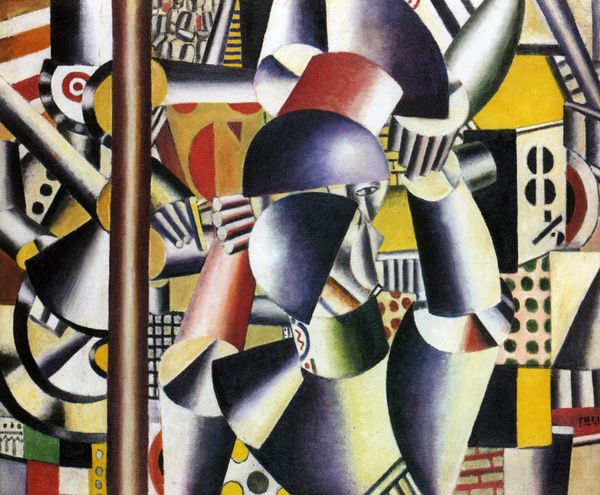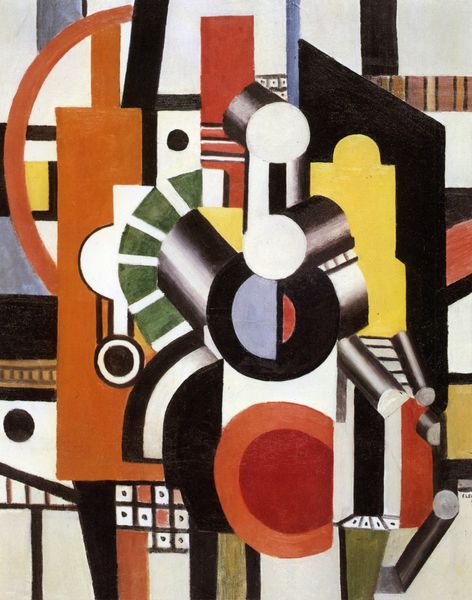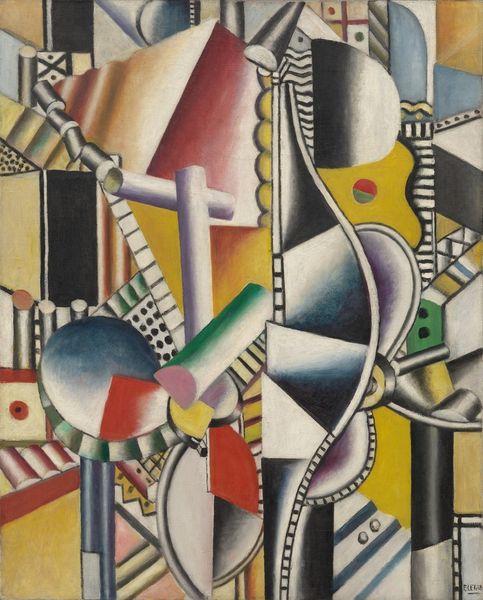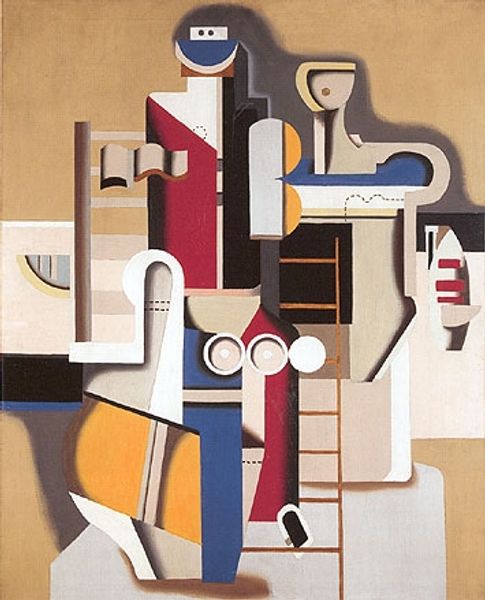
painting
#
cubism
#
purism
#
abstract painting
#
painting
#
geometric
#
abstraction
#
modernism
Copyright: Public domain US
Curator: What a striking array of mechanized forms! This is Fernand Léger's "Composition," painted in 1920. Editor: Yes, my first impression is of a robotic cityscape, an almost unsettling mechanical dance rendered in muted tones punctuated by vibrant yellows and reds. There is something almost post-apocalyptic in its severity. Curator: The painting perfectly demonstrates Léger's commitment to Purism. Notice how he reduces objects to their essential geometric forms, focusing on cylinders, cones, and spheres. The interplay between these forms creates a dynamic sense of rhythm. It is very different from Synthetic Cubism. Editor: Those primary colors are interesting, especially the yellows. In iconography, yellow represents intellect, knowledge, but can also imply caution or deceit. Here, against the predominantly gray and black palette, they feel more like warning signals, which matches that feeling I get looking at it, maybe an alert about dehumanization in the machine age? Curator: I agree. Léger explores the relationship between humans and machines, using contrasting textures and shapes to mirror a sense of conflict but also potential harmony. Look at the precision in the application of paint. It serves not to deceive us of depth but reveal. This echoes the influence of the machine age on our sense of beauty, not replicating reality, but creating a new formal vocabulary that captures the machine's stark geometry. Editor: I see an effort to merge humanity with the technological future. It speaks volumes about post-WWI anxiety and the burgeoning dependence on technology, how we grapple with that perceived loss of identity. Notice how some of the rounded shapes suggest gears or cogs. There's a powerful suggestion that we're all just components within a much larger, complex system, but perhaps a system on the verge of falling apart? Curator: A fair reading. Ultimately, it's a beautiful encapsulation of form meeting function. Editor: Indeed, and form revealing function, both aesthetic and societal. The questions linger, which is precisely what compelling art should achieve.
Comments
No comments
Be the first to comment and join the conversation on the ultimate creative platform.
